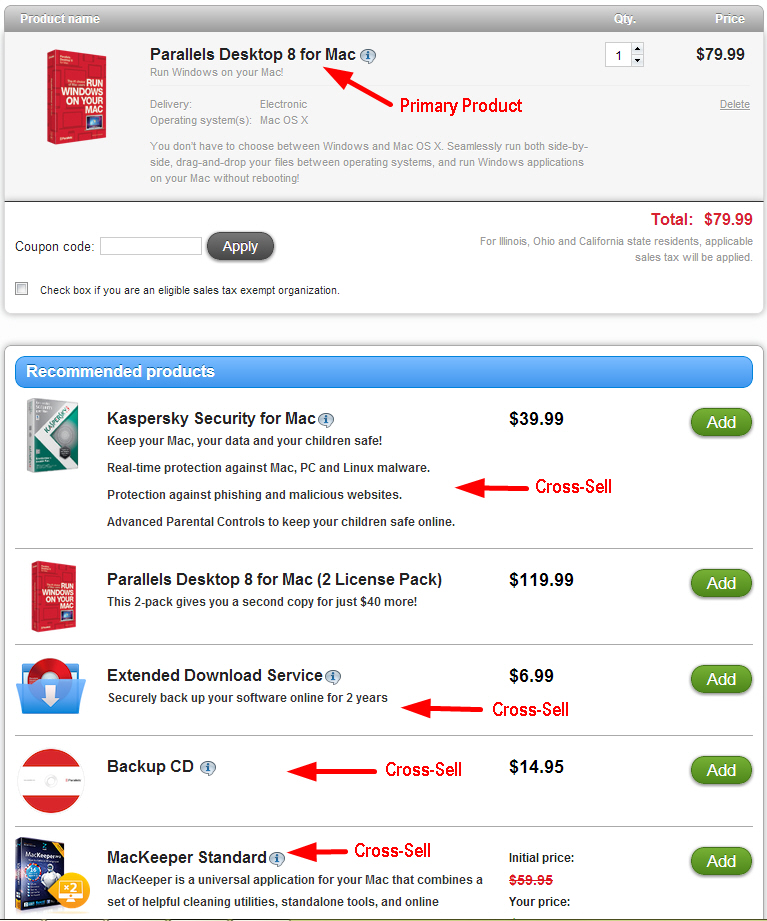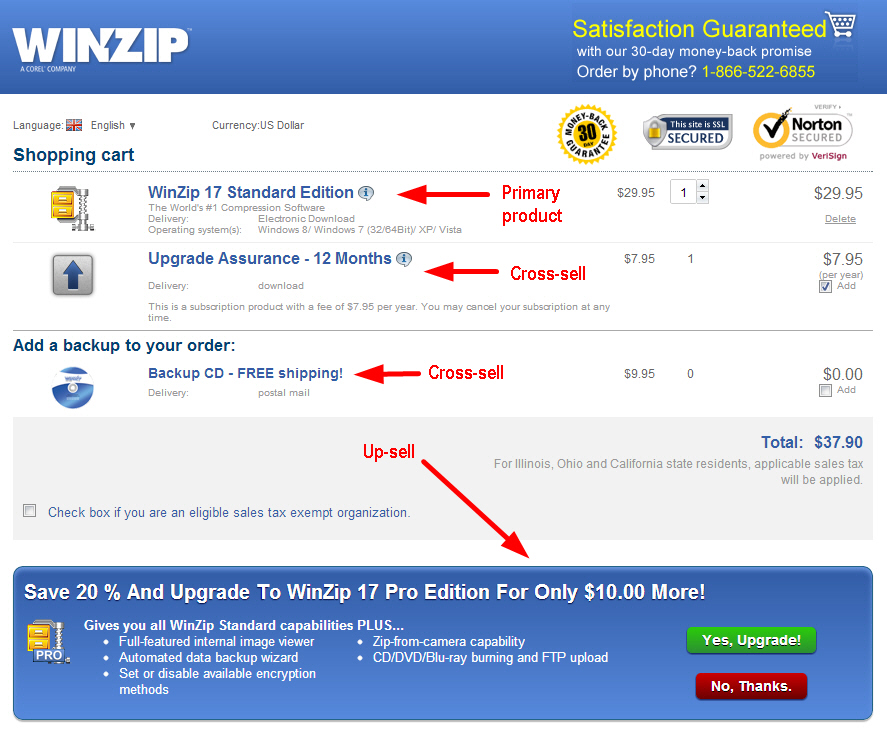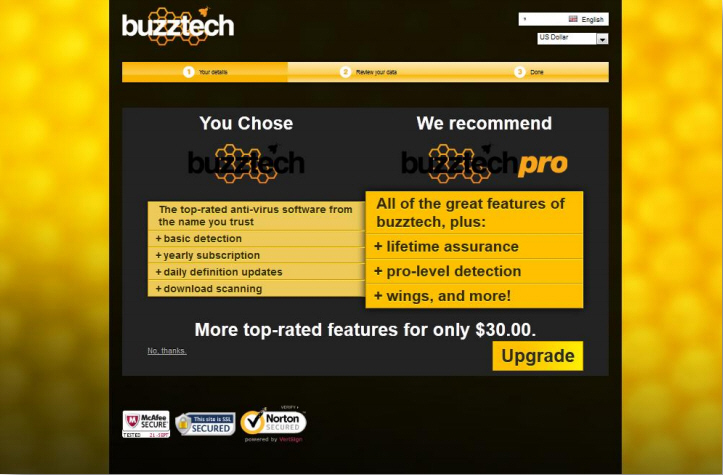I was recently shopping for a new Wi-Fi ready television and during the checkout process Amazon suggested that I might like to purchase a LAN adapter to connect the TV to my home network. In business lingo, this suggestion is known as the cross-sell. Cross-selling is when a company sells a customer a product or service related to their primary purchase, like when Amazon cross-sold me the LAN adapter to complement my television.
Similar to a cross-sell is an up-sell. In an up-sell, a customer selects a product they want to purchase. Prior to submitting payment and completing the order, the seller offers the buyer a more compelling, often more robust version of the original product selection. The up-sell provides more value and is often more expensive then the original product.
A good example of an up-sell in the offline world is when someone buys an airline ticket and then pays extra for a first class ticket. The difference between a cross-sell and an up-sell then, is that a cross-sell offers an additional product to a customer, while an up-sell offers a replacement product.
Software Cross-Sells
In the software space, the checkout process is the perfect place to offer cross-sells. These often take the form of backup CDs, upgrade assurances, advanced support or even complementary products from different companies. In Parallels’ shopping cart, cross-sells are labeled in a section of the cart called “Recommended Products”:

The Kaspersky Security for Mac and the ZeoBIT MacKeeper products are good examples of relevant offers that complement the primary product which is also for Mac users. Additionally, Parallels offers supporting items for its own product like the Extended Download Service and backup CDs.
Software Up-Sells
Software up-sells are typically upgrades. A customer may have chosen to buy a “basic” version of a product but then are offered to upgrade to the “pro” version in the middle of the checkout process. WinZIP offers a compelling up-sell from a standard edition with basic functionality to its pro edition with enhanced functionality:

Cross-Sales Analysis
It’s important to identify which products go best with each other. This is known as product affinity. In the table below, the backup CD that is cross-sold with Product A has a much higher conversion rate than when Product B is cross-sold with Product A.
Nevertheless, the revenue from the latter cross-sell drives almost three times the amount of revenue as the backup CD. A company with this kind of data will want to strengthen the affinity that Product A has with Product B to drive revenue.
So what can a company like this change to sell more additional products without causing too much distraction?
Highlight the offer
Compare the following two sample carts where a backup CD is cross-sold with a primary software product. If the conversion rates for the CD are low, this company might consider highlighting the cross-sell like the cart on the right. Not only is the product information on the right less unobtrusive than the one on the left, but the call-to-action (an “Add to cart” button vs. a check-box) is more prominent as well.
 |
 |
Test positions
There are many ways to merchandise products. Simply highlighting the offer sometimes isn’t enough to convince a customer to add the cross-sell. Perhaps customers would be more inclined to buy an additional product if the offer is positioned differently on the cart and additional product information is given, as in the following example. And although too much information can cause abandonment, too little can cause oversight.

Interstitials
So far we have only seen cross-sells and up-sells offered inside the cart. By making the offer on an interstitial page between the cart and checkout, the offer is focused in such a way that the customer cannot fail to overlook the offer. An interstitial page also allows the seller to highlight the value of a different product in a clear way without distractions. The example below shows the customer what they’ve chosen to buy and what features are available by upgrading to the advanced pro version of the product.

One of the key principles behind cart conversion is simplicity. Reducing distractions and focusing on completing the order are important steps to optimizing conversion rates. Despite the fact that cross-sells and up-sells may distract customers from completing an order a the primary product, they are important drivers of additional revenue nonetheless. Therefore, it’s important not to make assumptions without data to back up your hypothesis, as your customers might surprise you.
Keystone
Offer cross-sells to customers as additional products that complement their primary choice as well as up-sells that replace a lower-priced product with a more expensive and enhanced version. Test different marketing texts for product names and descriptions, as well as positions to improve cross-sell and up-sell conversion rates.
Andy Peterson contributed to this blog post
